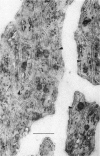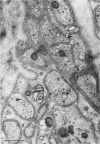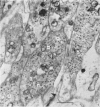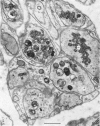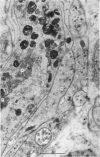Abstract
1. Methods are presented for studying axonal transport mechanisms in preparations of constricted hypogastric nerve/inferior mesenteric ganglia maintained in vitro for periods up to 48 hr. Under these conditions the ultrastructure of the tissue is excellently preserved.
2. The proximo-distal movement of noradrenaline and noradrenaline storage vesicles in the non-myelinated axons of these preparations is inhibited by both colchicine (10 μg/ml.) and vinblastine sulphate (1 μg/ml.) whilst the movement of mitochondria appears to be unaffected.
3. Neither colchicine nor vinblastine sulphate depletes accumulated dense-cored vesicles of their stores of noradrenaline.
4. These drugs reduce the accumulation of noradrenaline and densecored vesicles against a constriction when they are in contact with the nerve trunks only, and are denied direct access to the nerve cell bodies in the ganglion.
5. The only other morphological change that can be attributed to the action of colchicine and vinblastine is a marked reduction in the number of axonal microtubules.
6. The experiments provide strong support for the view that the axonal system of microtubules is closely involved in the proximo-distal movement of noradrenaline storage vesicles within noradrenergic neurones. The microtubular system does not appear to be involved in mitochondrial movement.
Full text
PDF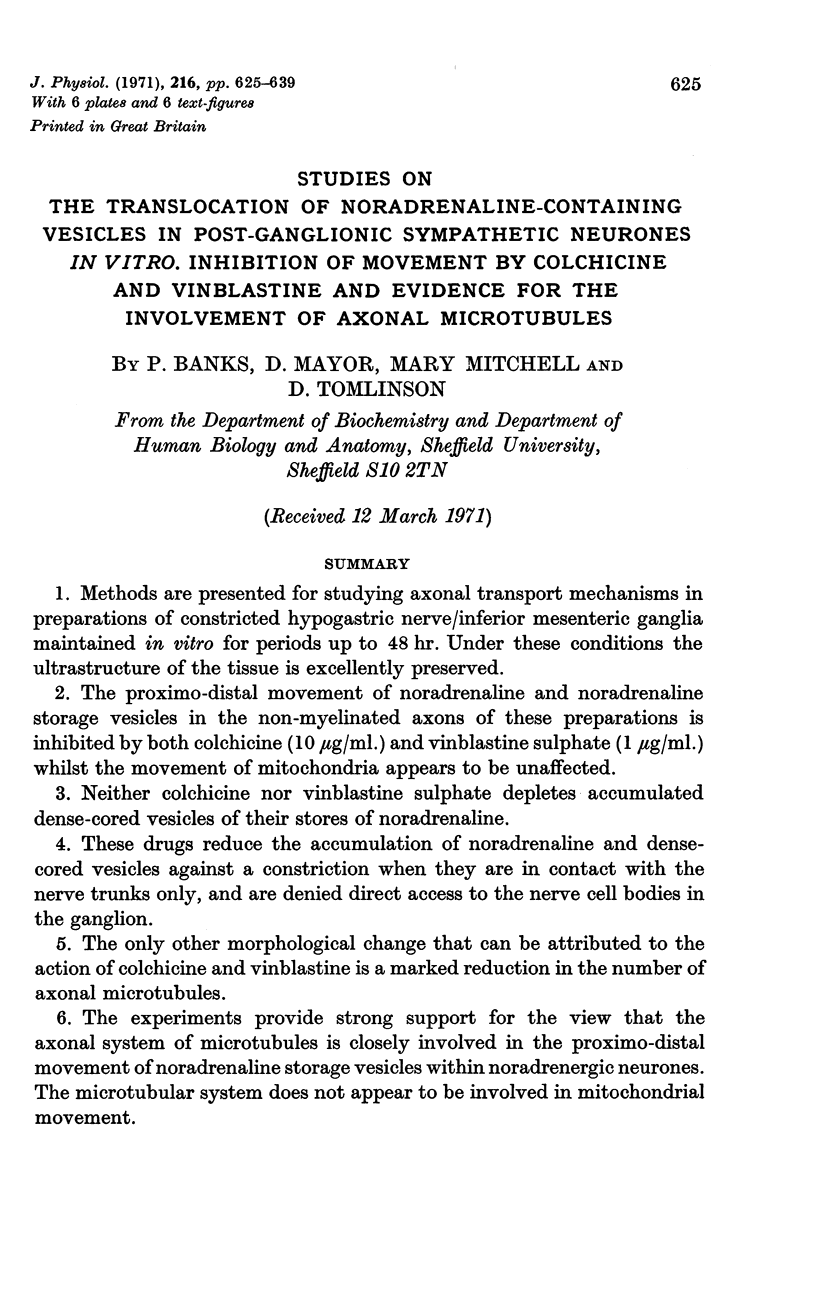
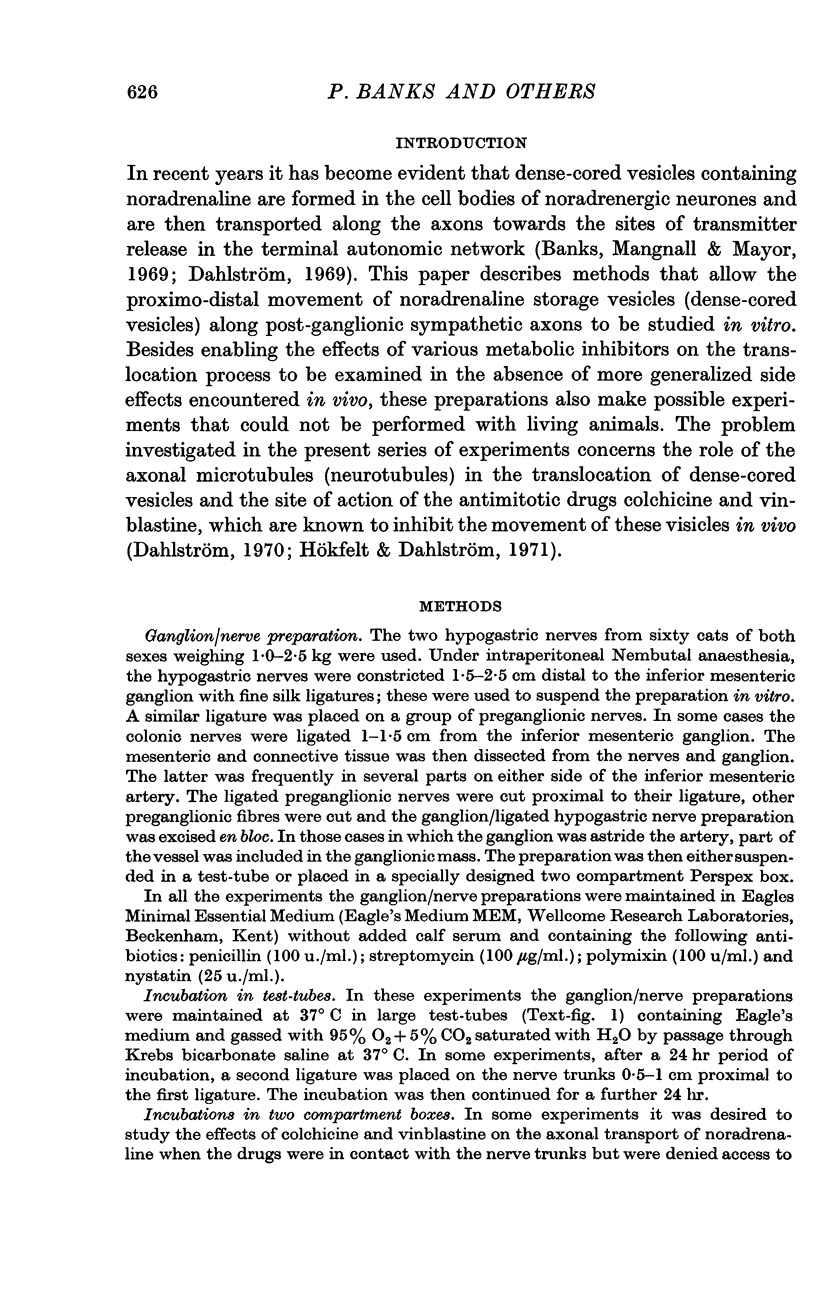

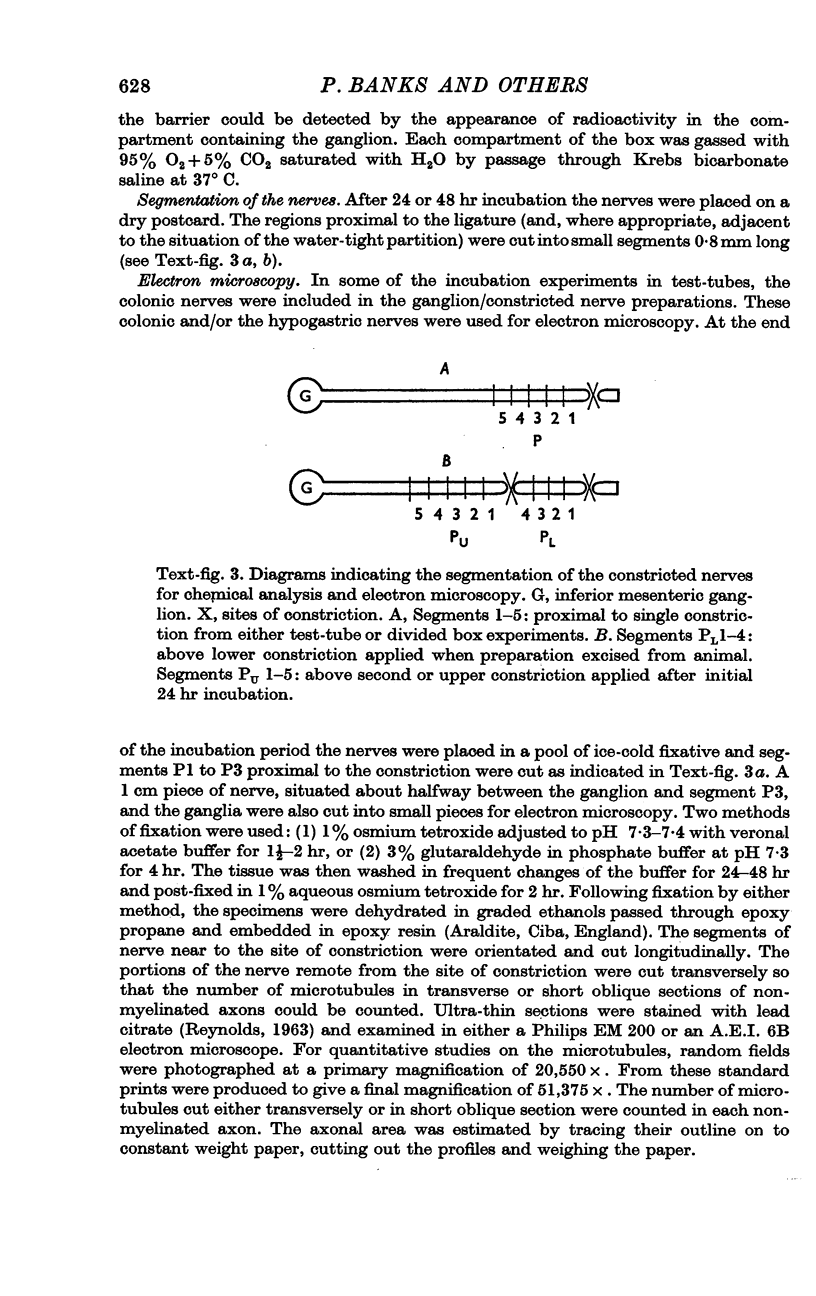
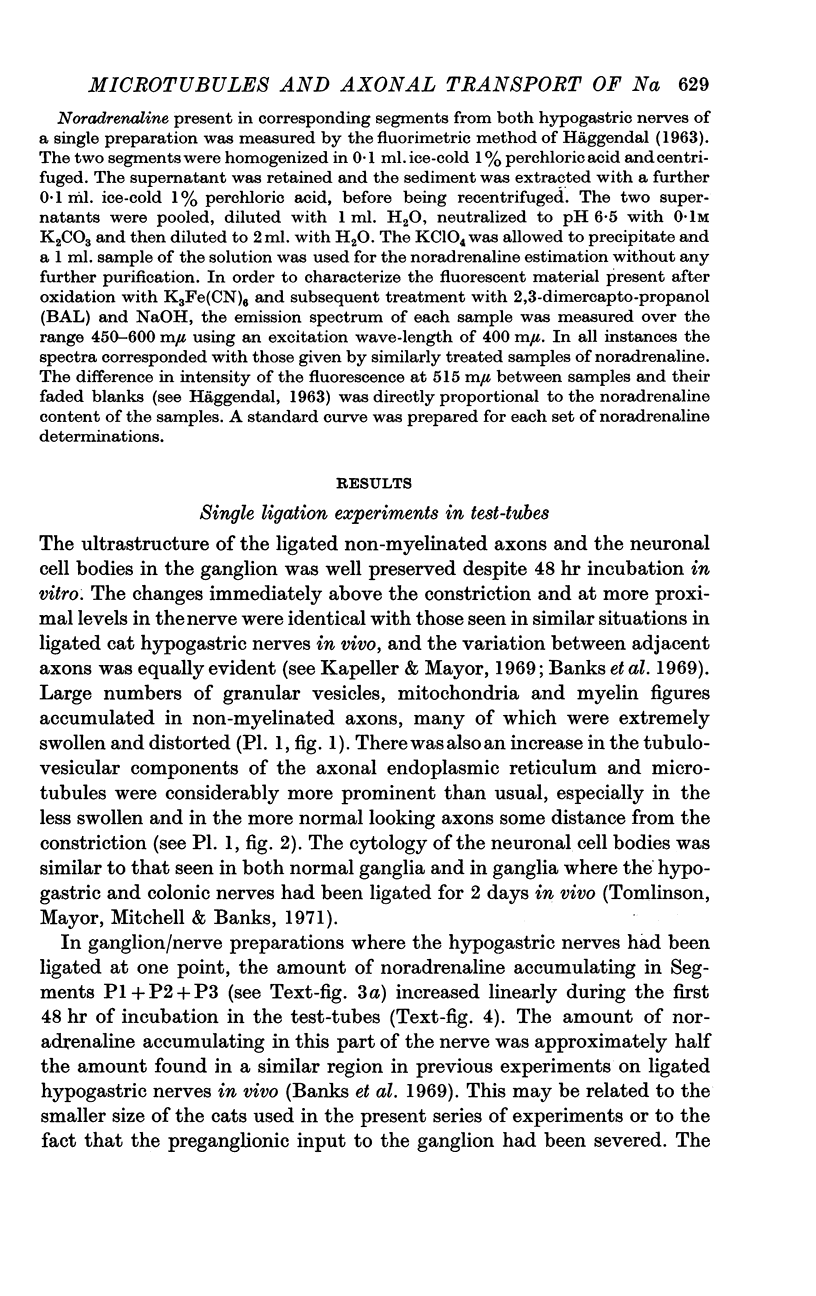
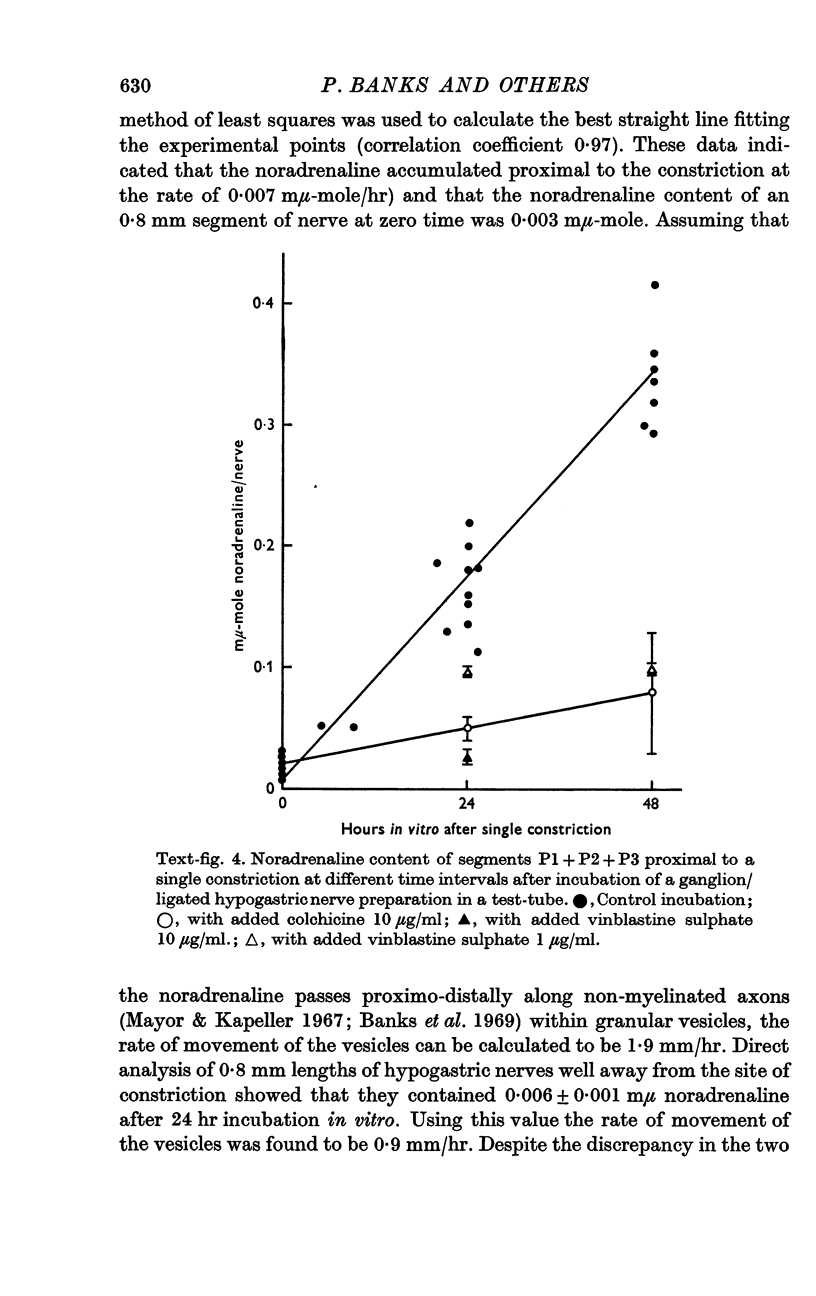
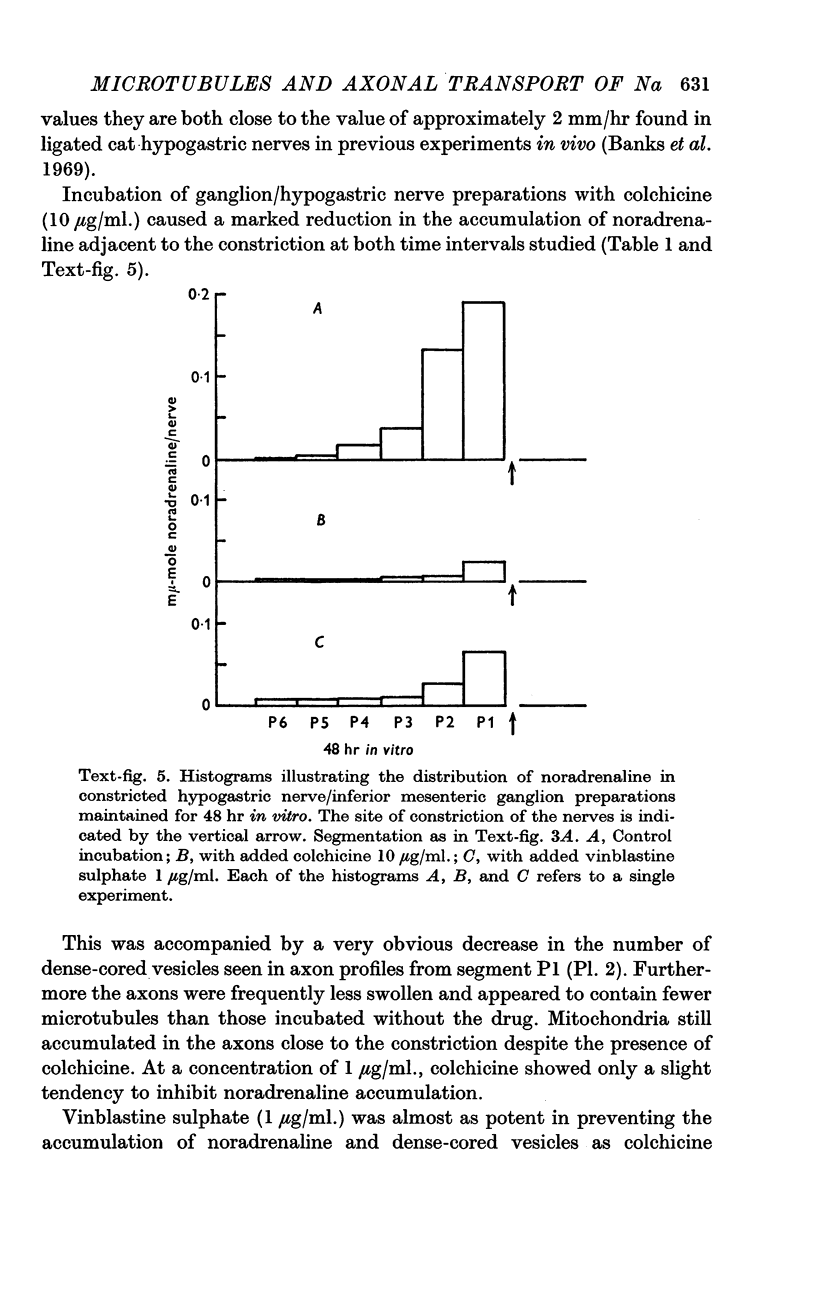
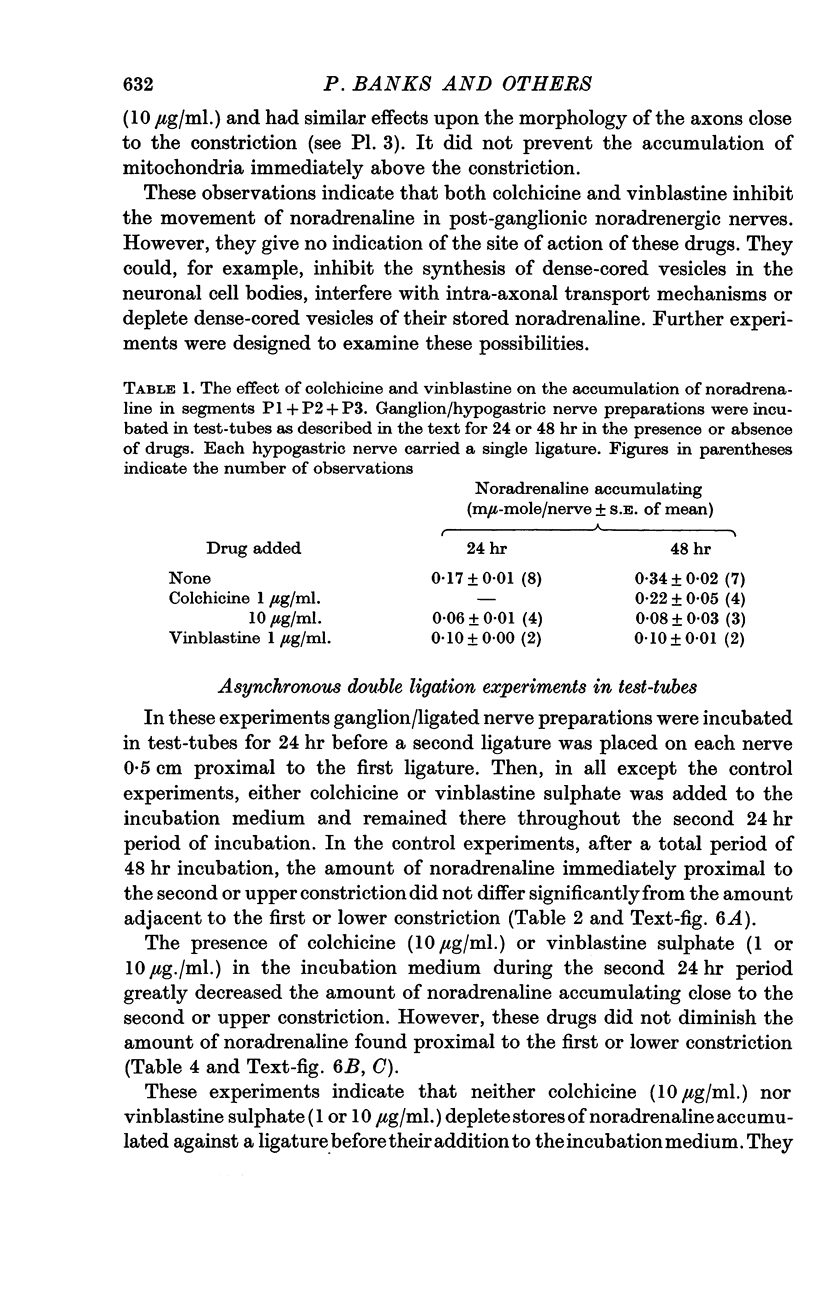
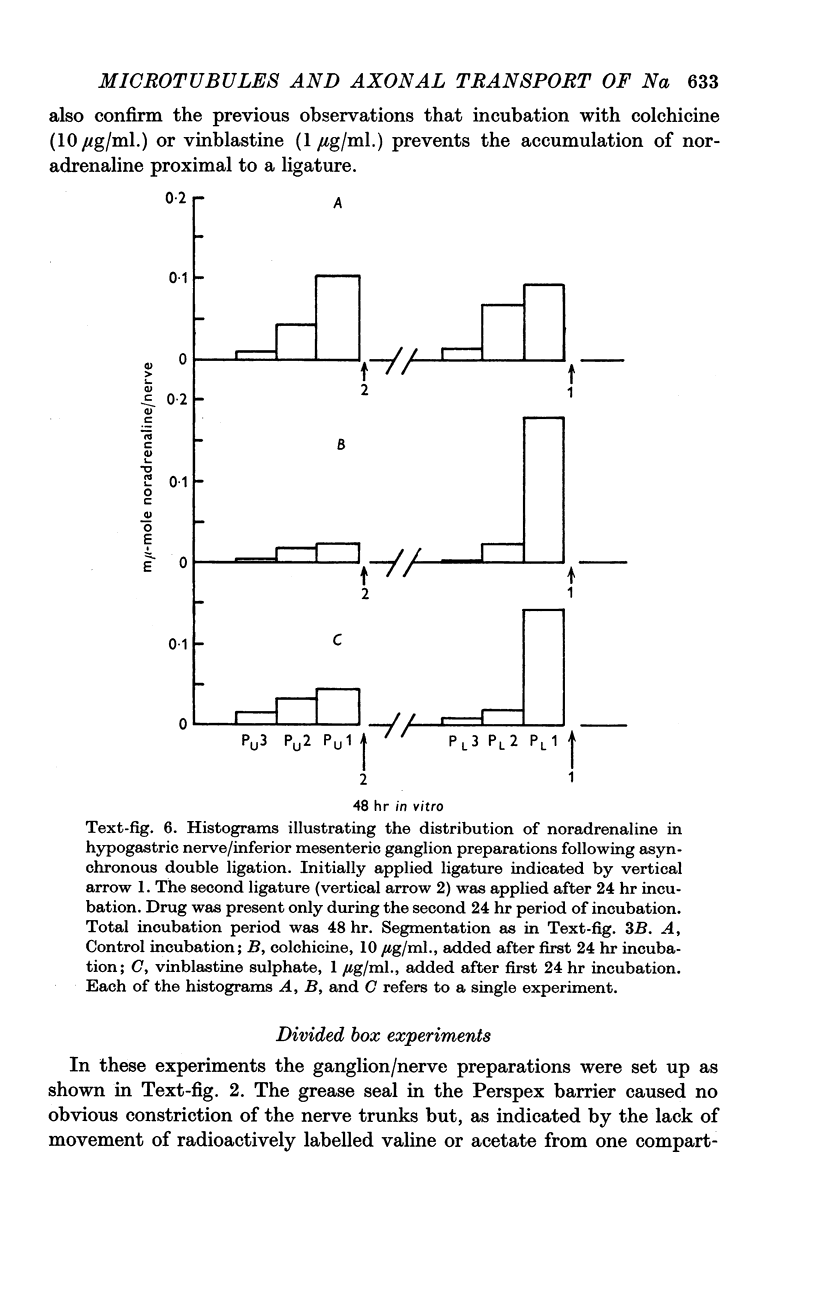
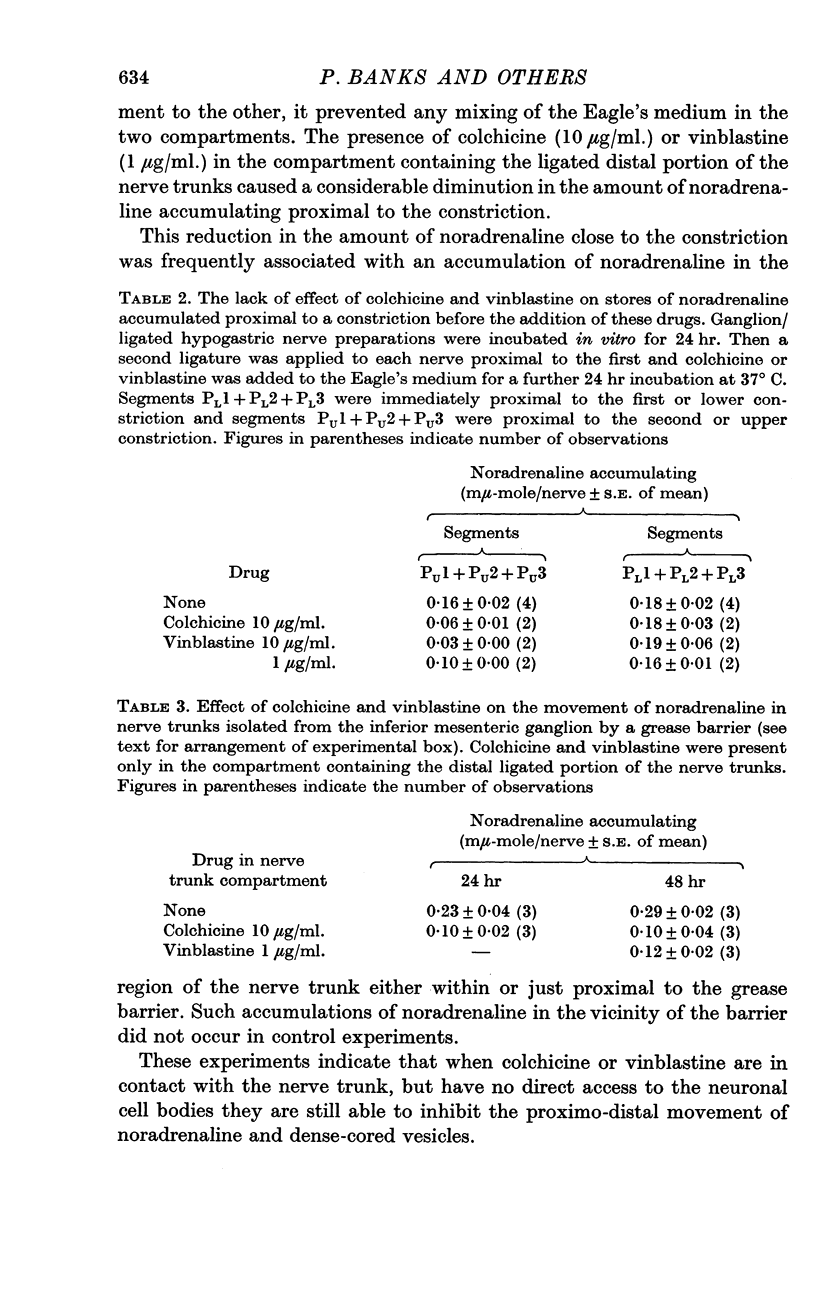
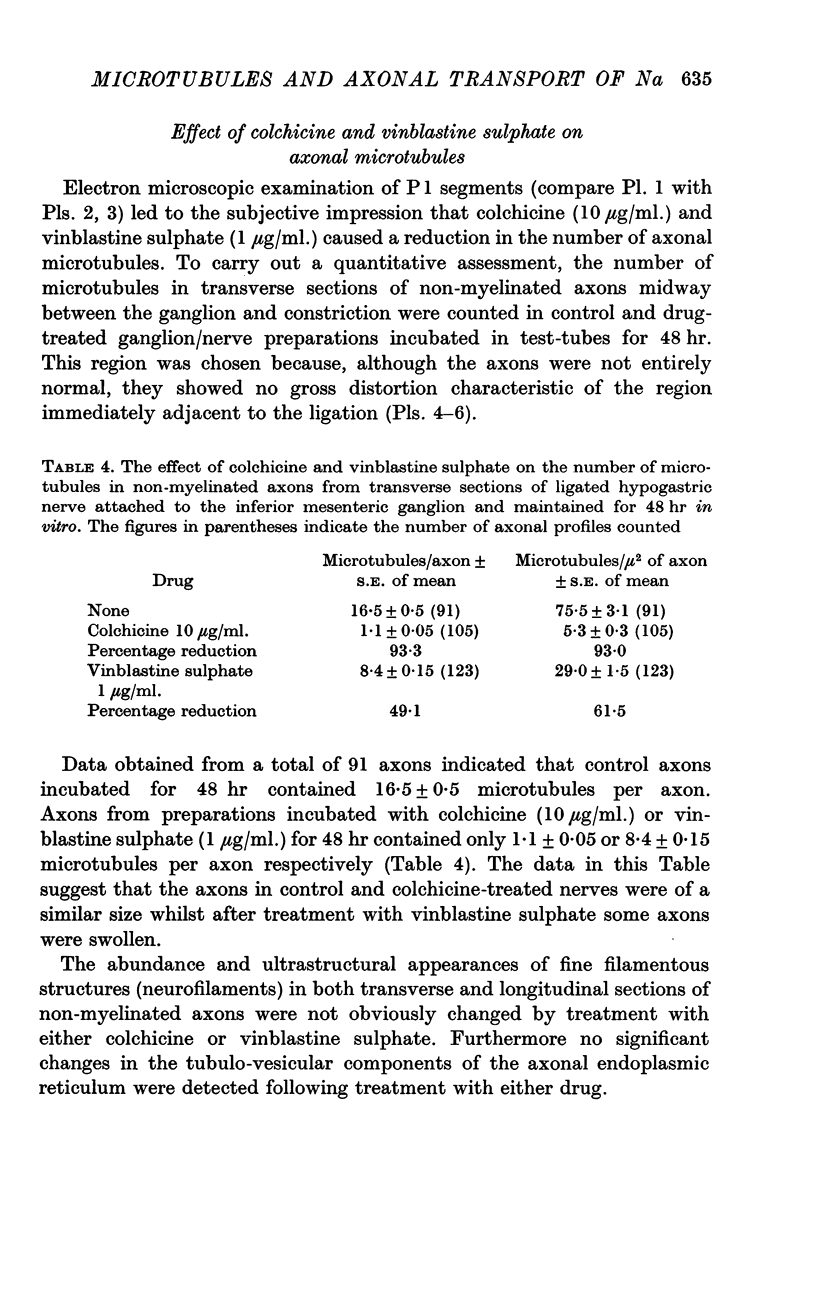
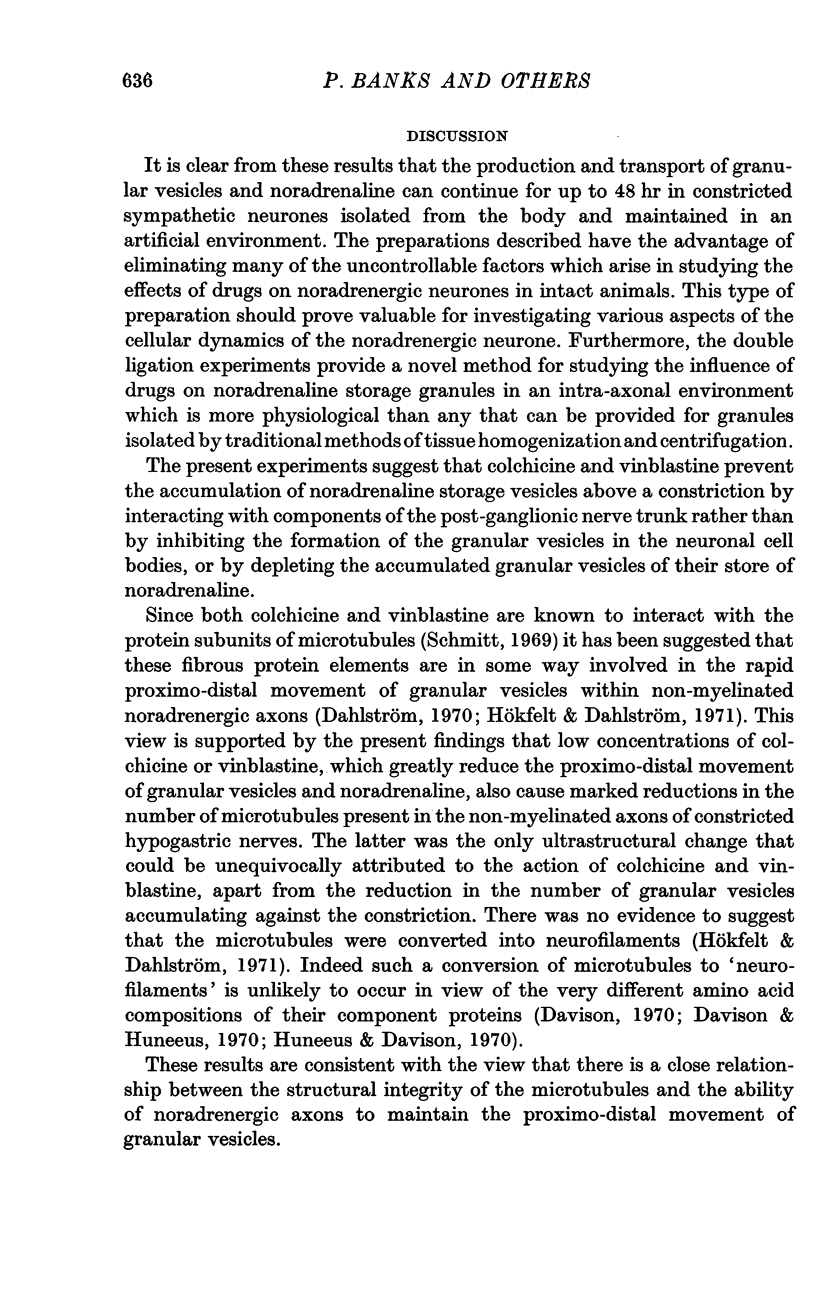
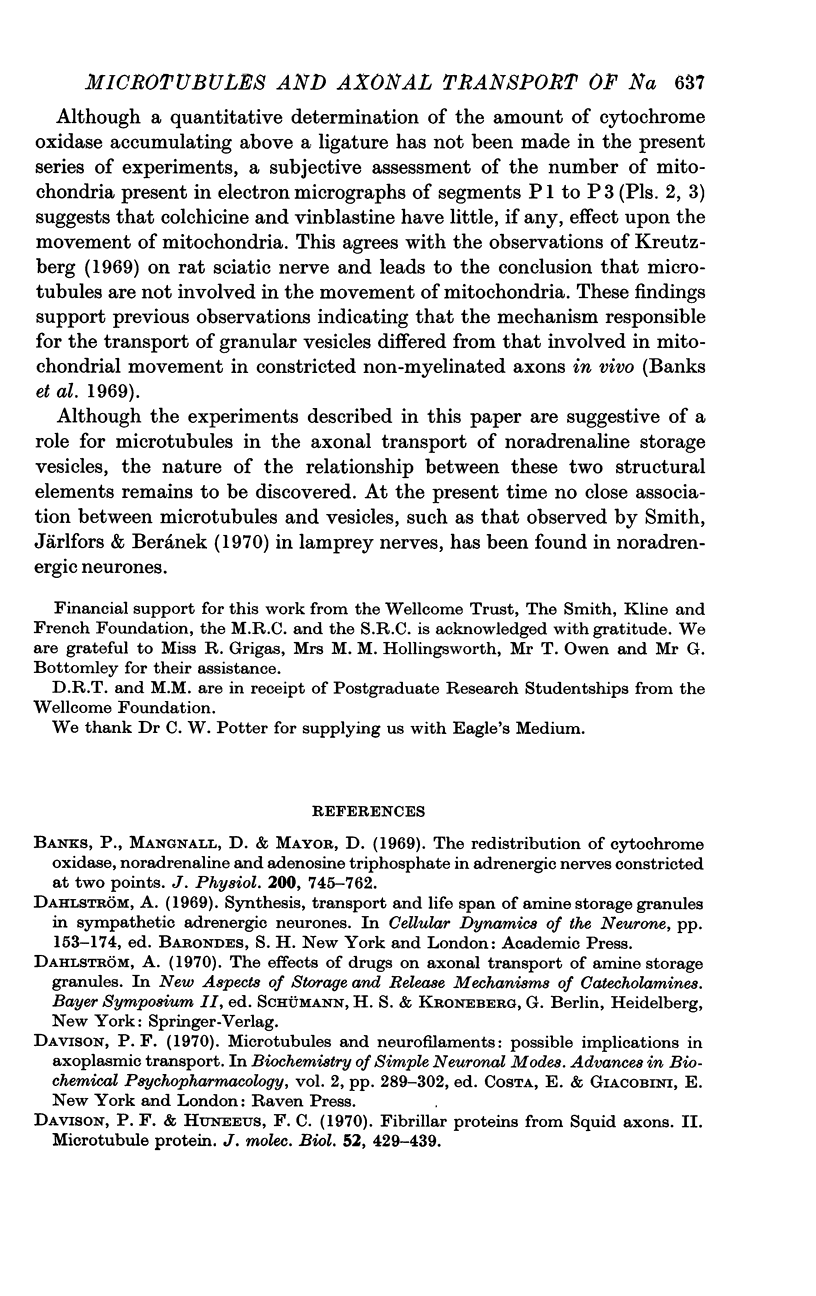
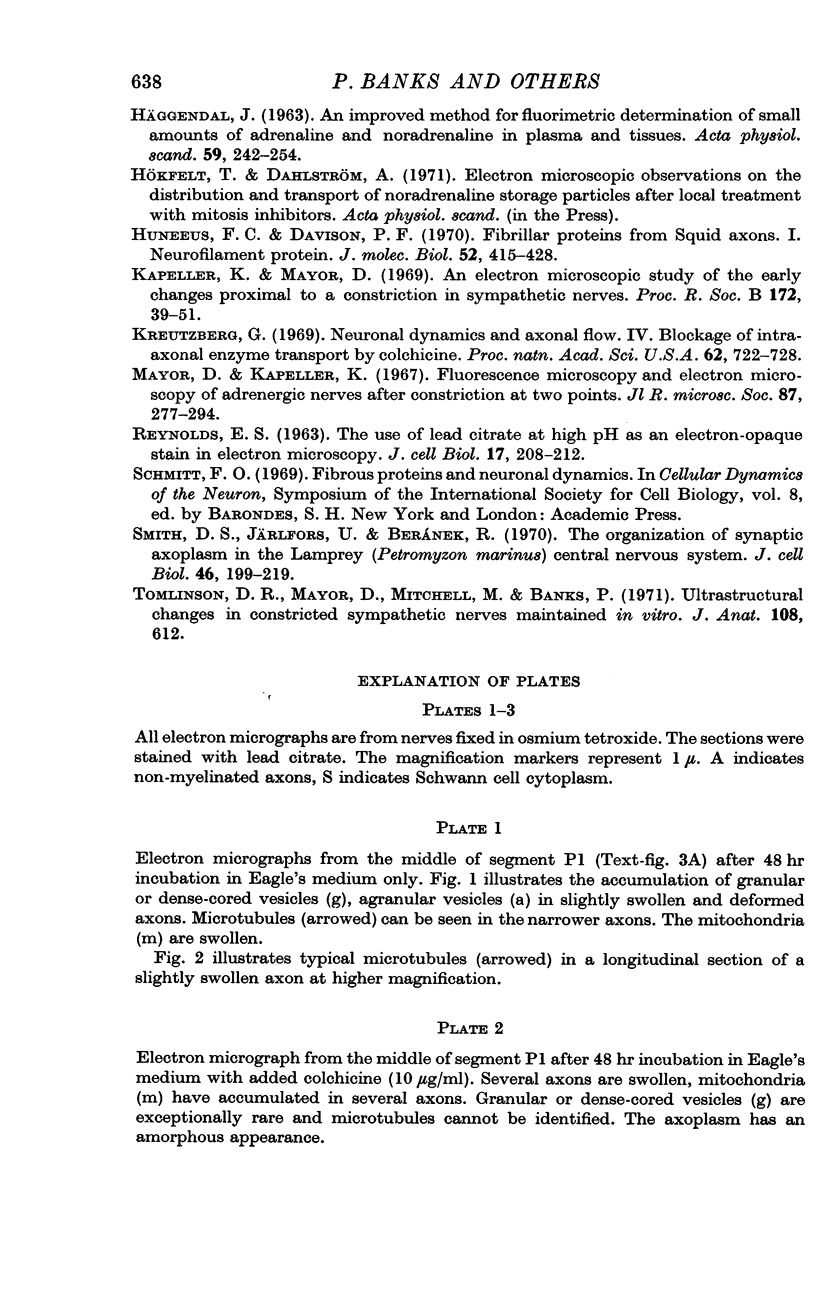
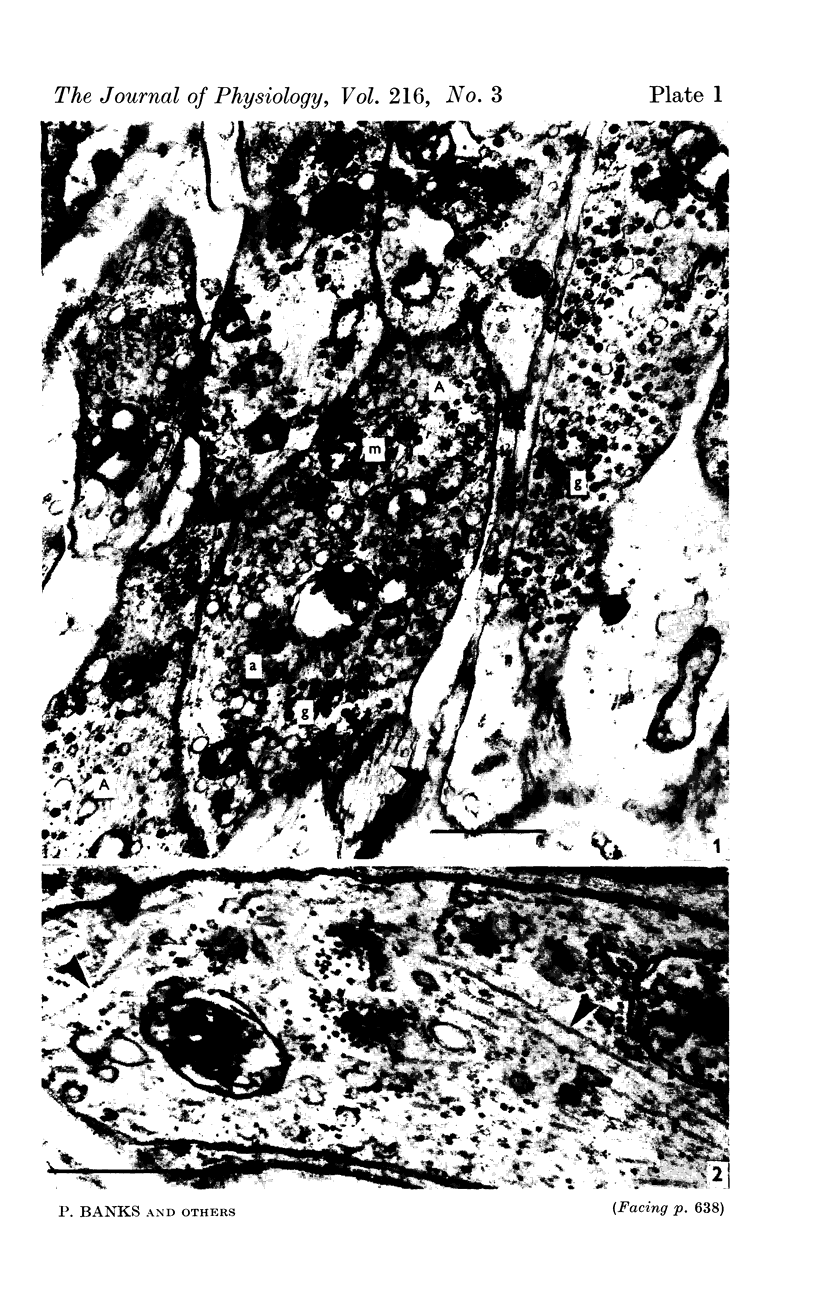
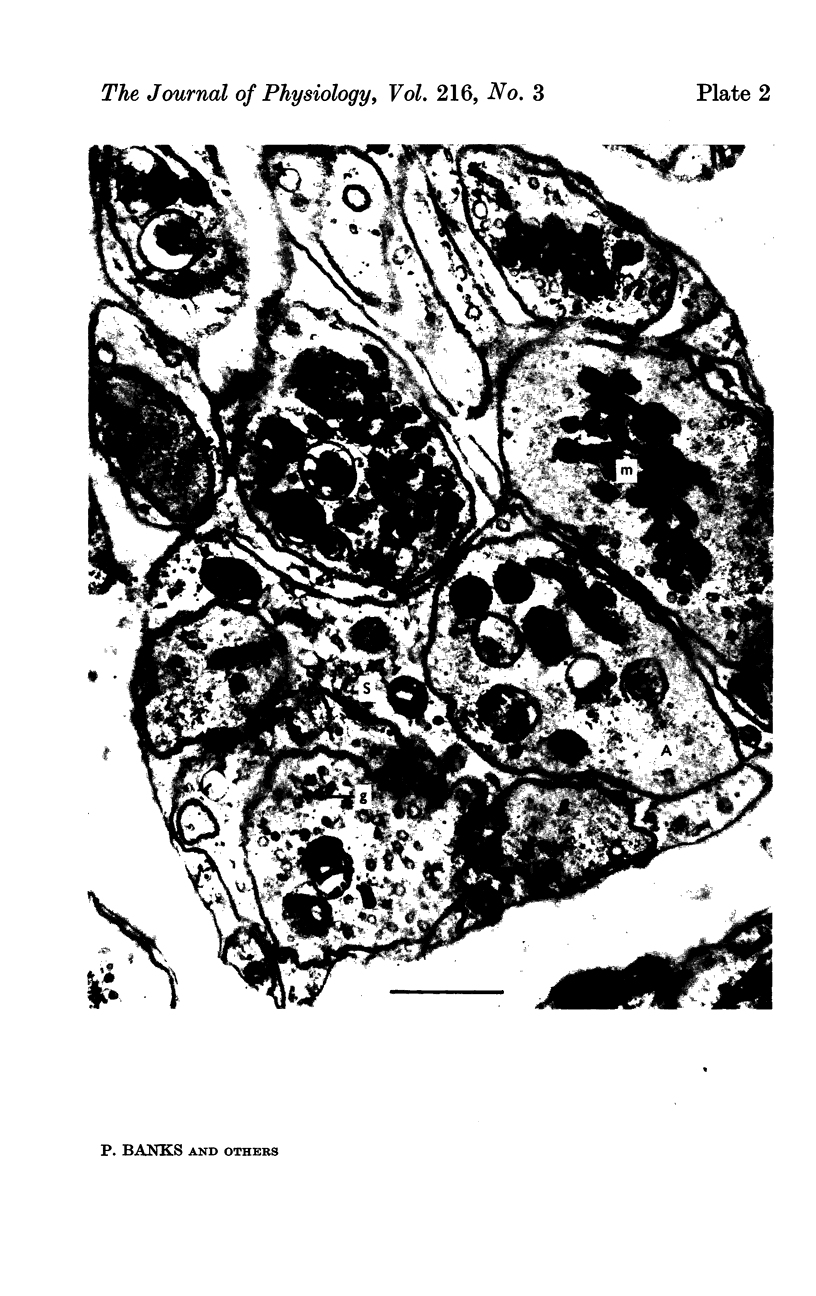
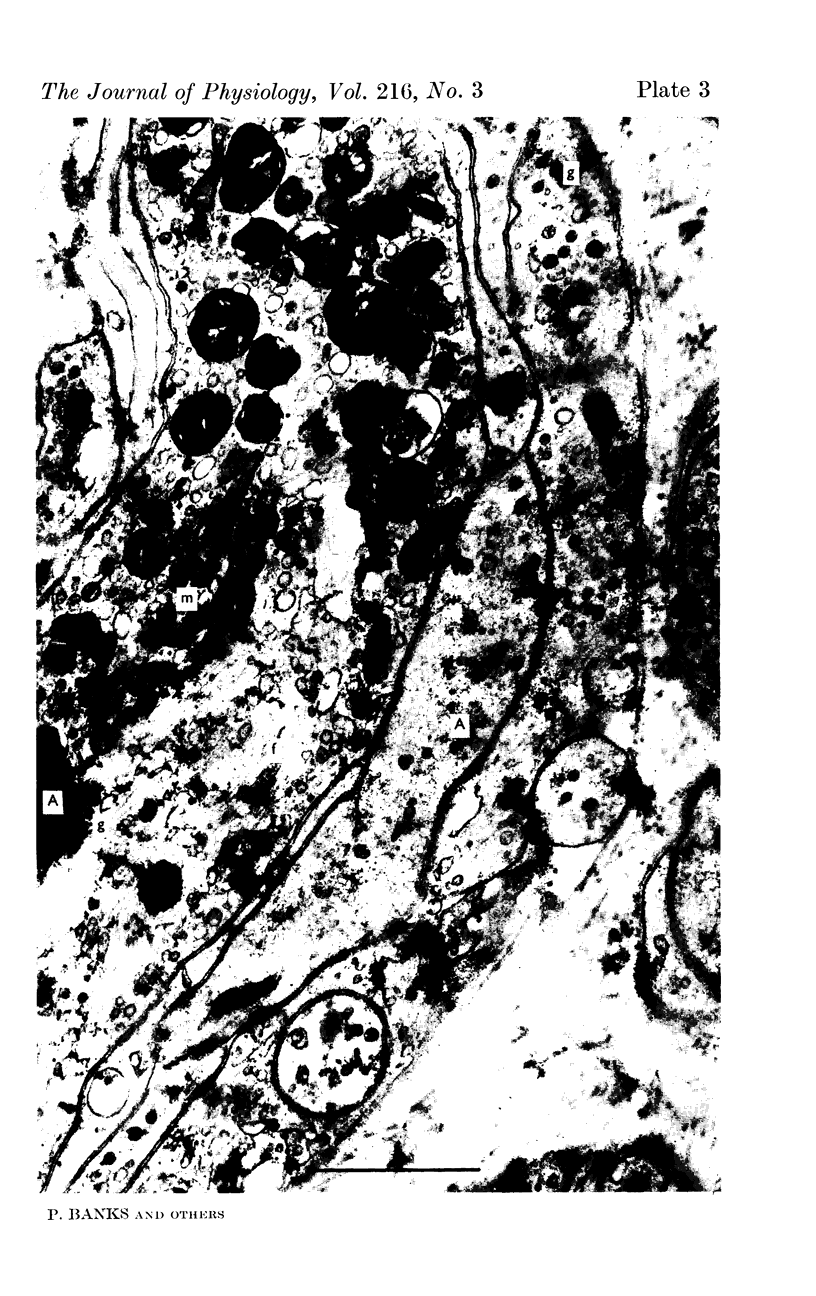
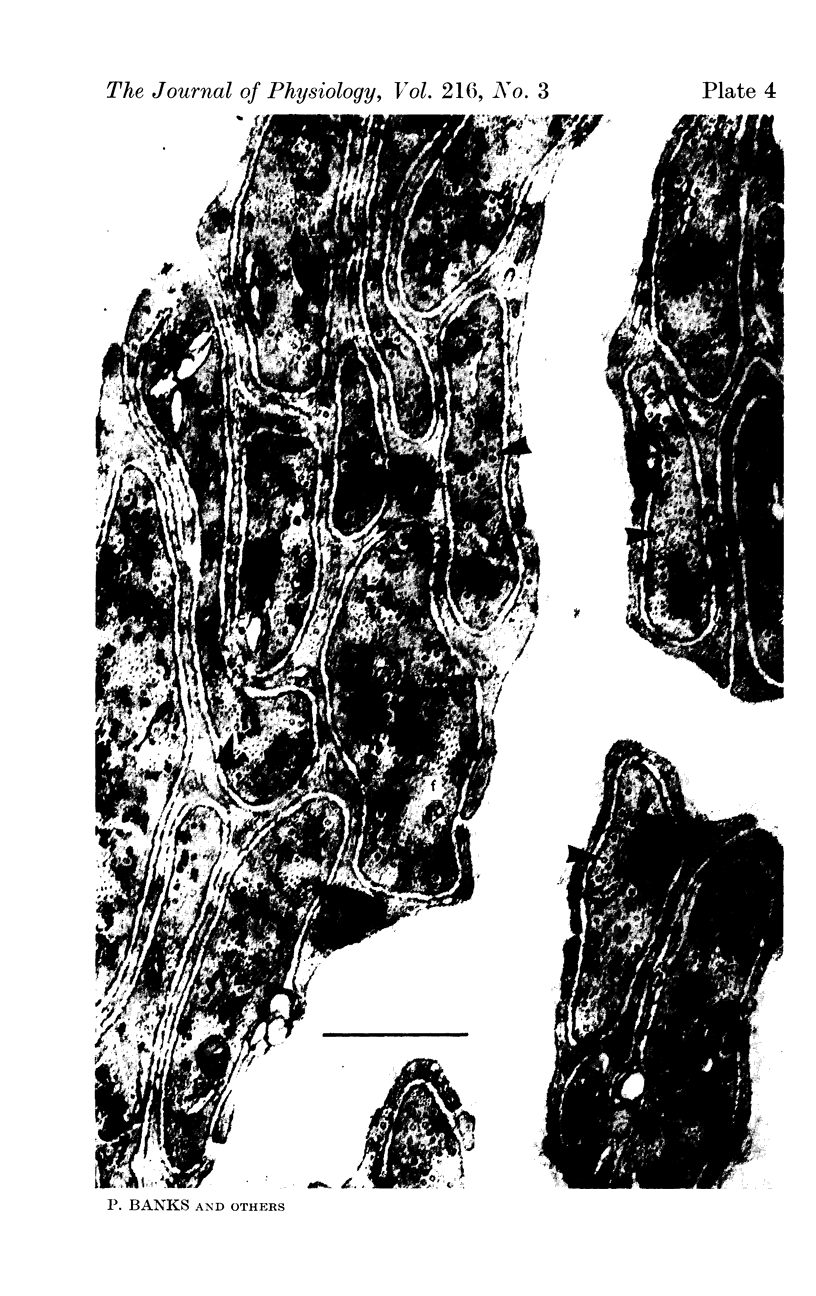
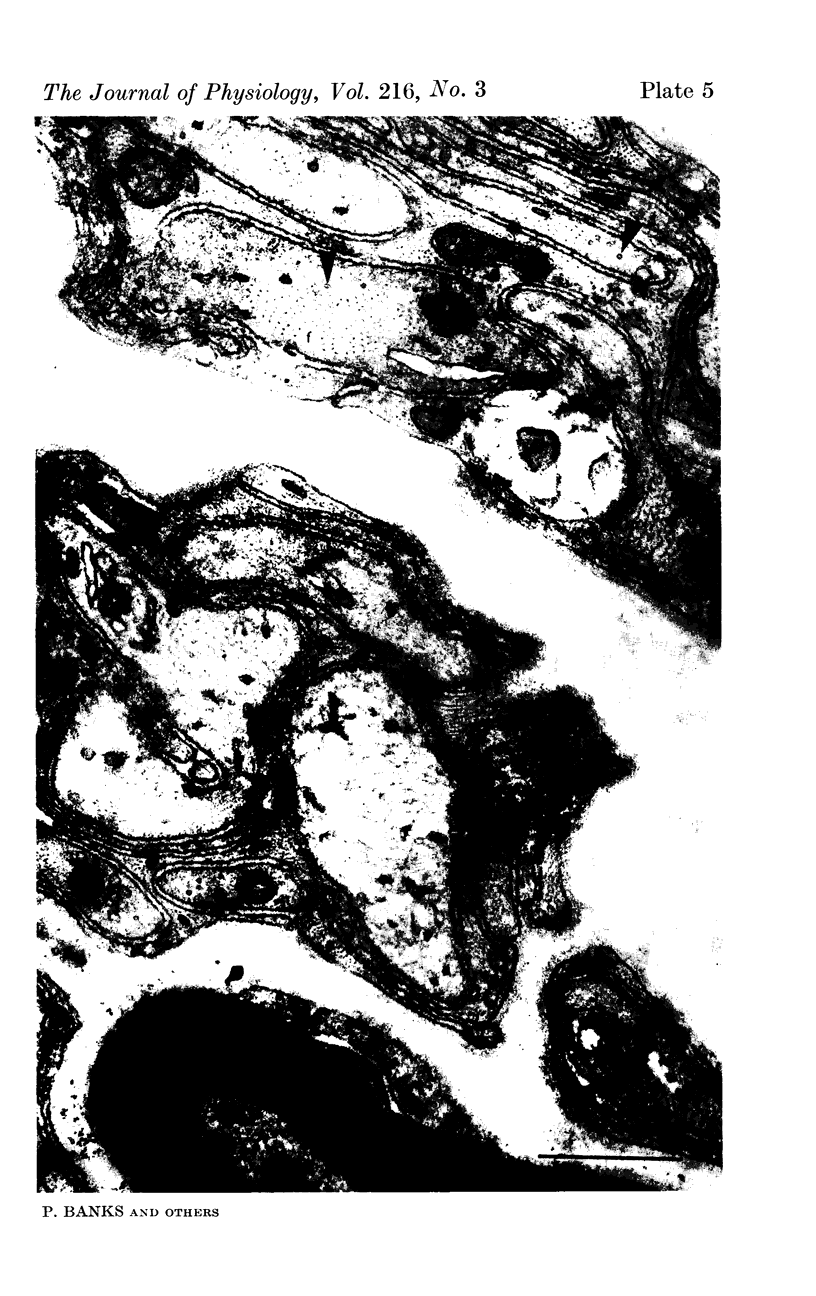
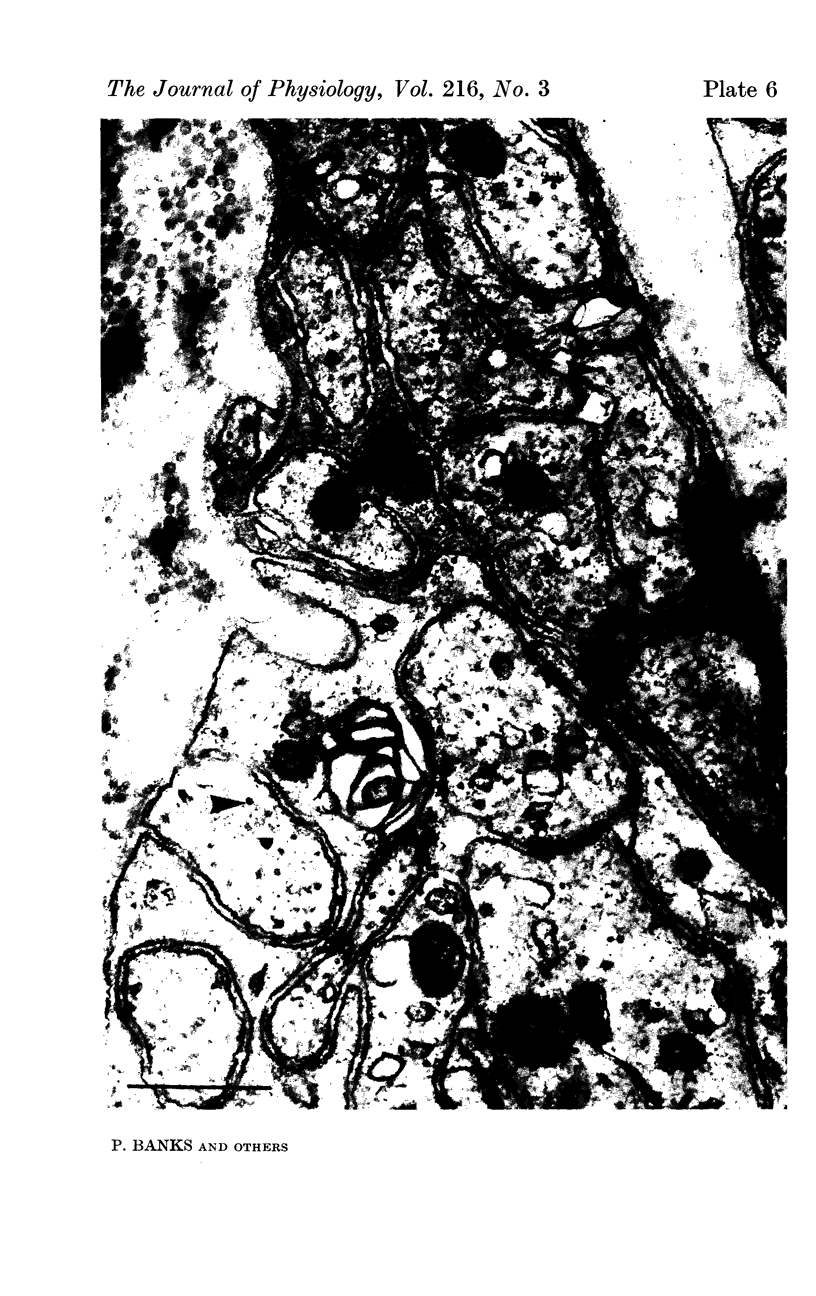
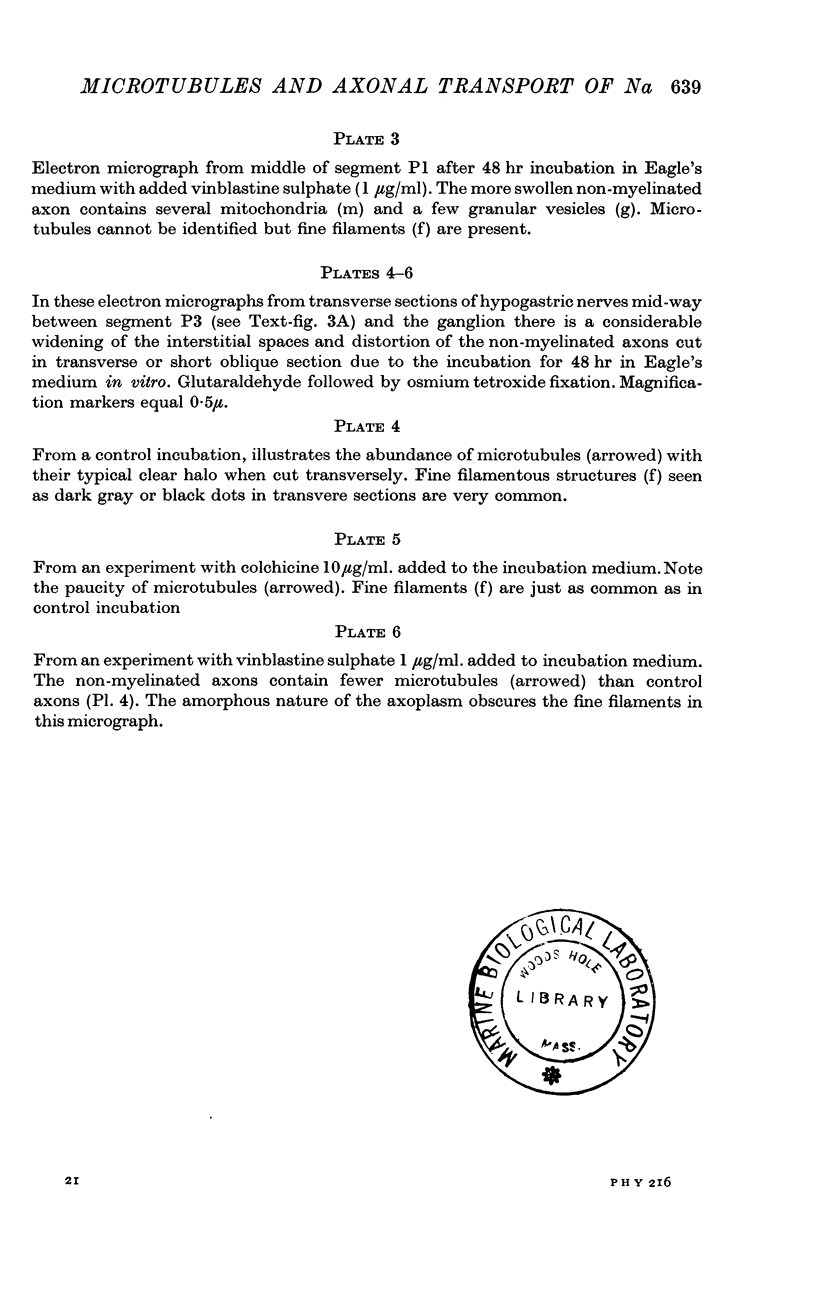
Images in this article
Selected References
These references are in PubMed. This may not be the complete list of references from this article.
- Banks P., Mangnall D., Mayor D. The re-distribution of cytochrome oxidase, noradrenaline and adenosine triphosphate in adrenergic nerves constricted at two points. J Physiol. 1969 Feb;200(3):745–762. doi: 10.1113/jphysiol.1969.sp008720. [DOI] [PMC free article] [PubMed] [Google Scholar]
- Davison P. F., Huneeus F. C. Fibrillar proteins from squid axons. II. Microtubule protein. J Mol Biol. 1970 Sep 28;52(3):429–439. doi: 10.1016/0022-2836(70)90411-0. [DOI] [PubMed] [Google Scholar]
- Davison P. F. Microtubules and neurofilaments: possible implications in axoplasmic transport. Adv Biochem Psychopharmacol. 1970;2:289–302. [PubMed] [Google Scholar]
- Huneeus F. C., Davison P. F. Fibrillar proteins from squid axons. I. Neurofilament protein. J Mol Biol. 1970 Sep 28;52(3):415–428. doi: 10.1016/0022-2836(70)90410-9. [DOI] [PubMed] [Google Scholar]
- Kapeller K., Mayor D. An electron microscopic study of the early changes proximal to a constriction in sympathetic nerves. Proc R Soc Lond B Biol Sci. 1969 Mar 11;172(1026):39–51. doi: 10.1098/rspb.1969.0010. [DOI] [PubMed] [Google Scholar]
- Kreutzberg G. W. Neuronal dynamics and axonal flow. IV. Blockage of intra-axonal enzyme transport by colchicine. Proc Natl Acad Sci U S A. 1969 Mar;62(3):722–728. doi: 10.1073/pnas.62.3.722. [DOI] [PMC free article] [PubMed] [Google Scholar]
- Mayor D., Kapeller K. Fluorescence microscopy and electron microscopy of adrenergic nerves after constriction at two points. J R Microsc Soc. 1967;87(2):277–294. [PubMed] [Google Scholar]
- REYNOLDS E. S. The use of lead citrate at high pH as an electron-opaque stain in electron microscopy. J Cell Biol. 1963 Apr;17:208–212. doi: 10.1083/jcb.17.1.208. [DOI] [PMC free article] [PubMed] [Google Scholar]
- Smith D. S., Järlfors U., Beránek R. The organization of synaptic axcplasm in the lamprey (petromyzon marinus) central nervous system. J Cell Biol. 1970 Aug;46(2):199–219. doi: 10.1083/jcb.46.2.199. [DOI] [PMC free article] [PubMed] [Google Scholar]



